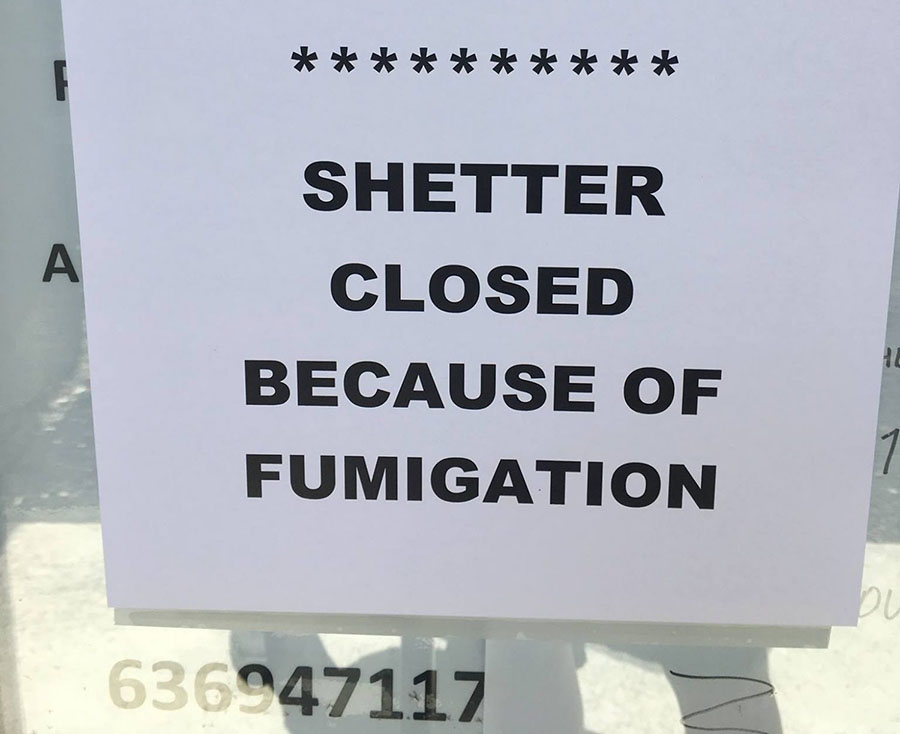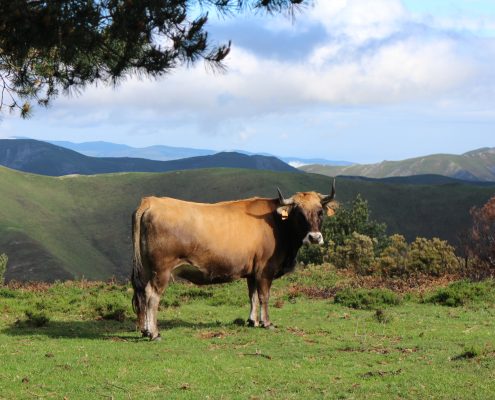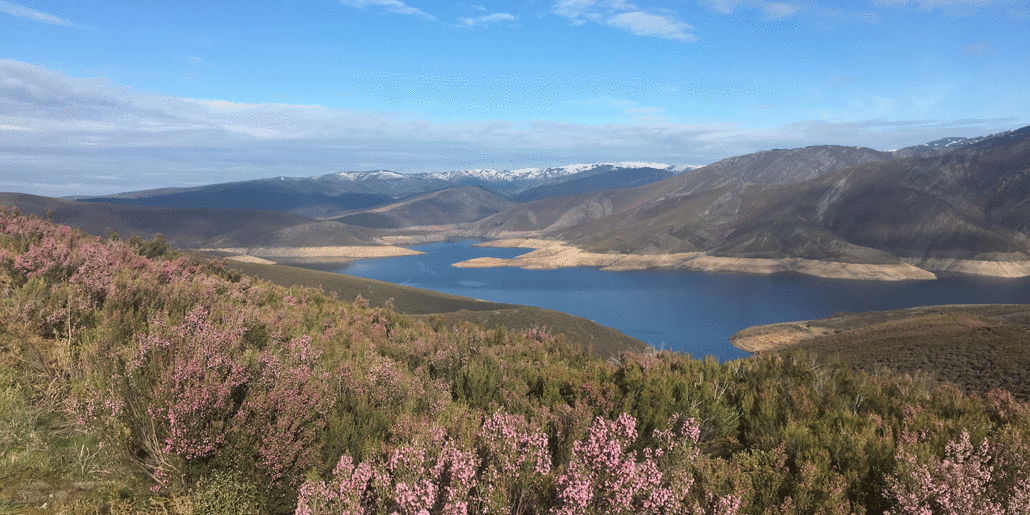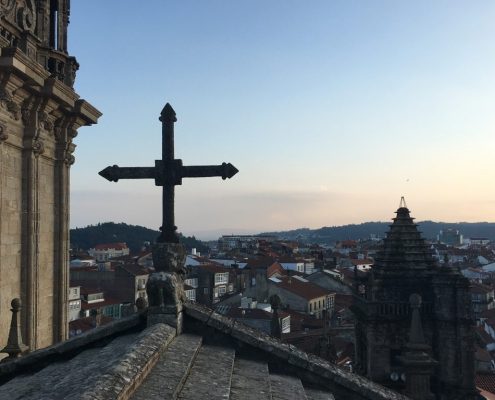INSIGHT Nine qualms about the camino, that never actually materialized
Below are my nine worries that bothered me the most before embarking on my first camino. The only thing they had in common was the fact that I could have done without them!
It took me seventeen years to finally reach the conclusion, that I wanted to walk the camino. I spent a lot of those years worrying about things that – seen in retrospect – were unnecessary.
1. Was I going to kill a snoring pilgrim in the dormitory?
2. Was I going to get attacked by bed bugs?
6. Will I be lonely walking the camino alone?
7. Will I get soaking wet from rain?
9. Will I be walking single file?
Was I going to kill a snoring pilgrim in the dormitory?
Worrying about snoring is quite relevant! You can get so exhausted from lack of sleep that it feels difficult to keep calm and sane (but no, you’re certainly not killing anyone…) My advice is to make a plan.
Mine was twofold: Physical and mental. My physical protection included:
- Miraculous silicone earplugs that thoroughly and efficiently shut out the world.
- A pair of socks over each ear strapped to my headband.
- My good, long camino pillow folded around my head.
And now: Goodnight!
My mental protection is about turning my attention inward and focusing on my thoughts and emotions: What is it I am afraid of when I worry that I won’t find peace to sleep?
Confession: Despite my physical and mental coping methods, I have, at times, been so desperately fatigued, that I have nudged the snoring pilgrim hoping to put an end to the snoring nightmare that had invaded my consciousness. And since I am confessing, I have also, at a public dormitory with two sleeping areas and “fixed sleeping spaces”, after midnight, made “The Great Escape” along with two other desperate pilgrims to the other sleeping area, which was only a quarter full, allowing a 75 % chance of getting a good nights’ sleep without others snoring. I will probably have to speak to St. Peter about this, I know…
Was I going to get attacked by bed bugs?
The fear of bedbugs on a camino are overrated compared to the risks. Forums and Facebook groups are filled with questions from worried first-time pilgrims.
My position on this is clear: The risk of getting bedbugs during a camino is the same as at any hotel in the world – regardless of the hotel’s location and stars. Bedbugs are not dangerous, annoying yes and tiresome to get rid of for sure, yet still harmless.
What can I do to avoid getting bedbugs?
- Check the bed upon arrival – should there be tiny blood stains on the mattress, it is a sign that bedbugs have been around.
- Never place your backpack directly on the mattress, the floor nor against the panels of the wall. Hang it, when possible, on a hook on the wall or the side of the bed or on a chair.
Avoid at all costs bringing the bedbugs back home! It is a very tedious chore, if you are so unlucky to bring them back home with you. You may have them in your backpack even though you weren’t bitten during your pilgrimage, so taking precautions is always a good idea.
What I do when I come home is:
- I ask a member of my family to bring me a towel from our closet.
- I take all my clothes off outside and pack them all in plastic bags.
- I unpack outside. Everything that can NOT be washed at 60 degrees or more, I put in plastic bags and freeze for 48 hours – including my backpack.
- Everything that can be washed at 60 degrees or more, I carry directly to the washing machine and wash it immediately.
What if I got blisters?
Blisters are a risk, yes. Fortunately, though, there are things you can do to minimize the risks both before you travel and during your trek.
While laying around at home, half dreaming/half worrying about the camino: have a foot bath. Remove calluses carefully with a foot scalpel, cut your toe nails short and apply foot cream. This will give your feet the best possible start.
When on the camino – first of all: Listen to your feet. A warm, burning feeling somewhere on your foot might very well be the first sign that you are about to get a blister. Stop walking, take a break and take off your boots and socks. Change to a dry pair of socks. I never walk for more than two hours before I take a rest and change socks. This cools down my feet and is one of the best techniques to avoid blisters.
When starting to walk again, I put on dry socks and dry the ones I have just been wearing on my walking sticks.
Will I get lost?
Probably, yes. But also probably not for more than a few kilometers. I have never seen as much help given as on the camino. It is exemplary! Should you be walking and wondering in your own thoughts and miss a turn, a farmer on a tractor will probably stop and help you get back on track. People wave and point from balconies, drivers stop and guide you. Many look out for the pilgrims.
Finding your way in town is the tricky part. A good tip when you arrive to a town is to figure out which way the camino leaves the town before it gets dark. There are fewer signs in the towns compared to in the countryside. It’s comforting to know the way out of town before venturing out in the early hours of the morning when it may be dark.
Often there is a reason for and gift awaiting when you get lost. What was your attention on, and could it teach you something? Or was it a beautiful experience you wouldn’t have had had you not missed that turn? I remember reminding myself of this, after I had walked for 45 minutes uphill on a pretty steep hill, I stopped and took in the fantastic view – off camino!
Will I be hungry?
Hunger doesn’t work for me, at all. Hunger unsettles me and my mood is directly proportional to it. I absolutely hate being hungry and it makes my behavior unruly. Which is why not having the possibility to buy food was one of my biggest concerns during my first camino, a trek on a quite deserted route. But.. I am still here! I made it!
However, I would be lying if I said that I had completely avoided being hungry on my walks. The grocery store owner could be on a siesta, and a few times I did start on a day’s journey without provisions. Appetite grows congruently to physical activity and being active all day does drive the appetite to heights unknown before. So yes, during my hunger panged walks I have seen visions of grocery stores, as the Bedouin woman saw water.
I don’t worry about provision any more, as I have learned to trek prepared – I always have these three things in my backpack as emergency snacks:
- Two tomatoes
- Black olives
- Dark chocolate
Tomatoes because I love them, olives because I know how hungry I often get for salt, especially when I sweat a lot. And the chocolate, which I actually rarely eat, but it is good to have, as it doesn’t weigh much and gives a surge of energy quite fast.
Will I be lonely walking the camino alone?
I am by nature one who gets energy from interacting with people. I am externally motivated as they say. Even during yoga and meditation I thrive having other people around. So my thoughts on walking the camino alone, without any company scared me the first time I was there alone.
My worries became trivial once I had begun the trek. Mostly because I absolutely loved walking alone, which I did on Camino Primitivo. My internal journey and dialog was profound, and I didn’t miss other people’s company at all. Sometimes should our speeds and rhythms match I would walk with other pilgrims. First I met a yoga pilgrim from the Canary Islands, then a catholic priest turned bus driver. It was strange to go our separate ways afterwards. I spent my evenings with my camino family. We were an awesome group of 7 and we all walked around 30 kms a day, ending up in the same teeny tiny places.
There is a kind of openness on the camino which allows me to say that it is probably the easiest place to make new friends compared to any other travel form out there. Alone is probably the last thing you will be on your trek, at least if you are open to the people you meet on your way.
Will I get soaking wet from rain?
I have carried strange and completely unnecessary items with me on the camino because I was terrified of getting soaking wet! Black trash bags, a rain jacket, rain pants, a rain hat, rain gaiters and a pair of rain shoes.. common to all of these? I didn’t use them!
Looking back, I see that some of the best moments spent during the camino was when my socks got wet, I was taken by surprise by a rain shower or when the mist enveloped me all morning. I have this belief that “the sun will dry it”. Concretely thinking I will get it all dry by the morning. And figuratively speaking “the sun will dry it” meaning that when life deals us a tough hand, everything looks and feels better when the sun shines, tomorrow.
So what DO I bring with me to combat the rain? My rain poncho. And that’s it. It weighs next to nothing and protects me and my backpack from the rain. I use it against the wind too – it is windproof!
Will I be cold at night?
My bedding and my bed are my safe haven. I am not good at sleeping new places and I hate being cold at night. I am also a bit of a control freak, and I like to know what the night will bring. This gave me several things to worry about before heading out on my first camino. However, again, they were unnecessary. After a day of walking 20-40 kms, I slept like a baby. I was cold three times on the camino, all three during the end of May. It was during my second camino, when I had tried to save 900 grams and had removed my fleece blanket. That was not a good idea, because when I crossed the border to Galicia, there were no blankets to borrow in the public dormitories. So in Lugo, I succumbed to the cold and bought a hideous but warm blanket for 15 USD. Since then I have undergone a wool revolution in my trekking gear, and my baggage for the night is always the same (during treks from April through to October):
- A woolen sleeping bag
- A set of woolen underwear made for skiing
Will I be walking single file?
That is totally up to you. The number of pilgrims that you will meet depends on two things: The time of year/season and the route.
There is not only one camino but several. See the routes and how you can find solitude on the different caminos here.
If you choose the famous French route (Camino Francés) in July, you will be agreeing to single file trekking. Are you looking for silence and peace, choose the “low seasons” from November to March. And if you do want to go between July and August, then choose one of the caminos that attract less than 5% of the pilgrims.
The closer you get to Santiago, the more pilgrims you will see in the horizon – and the more pilgrims with a light one-day backpack.














































Leave a Reply
Feel free to ask us a question, comment or share your own tips.We are looking forward to hear from you!